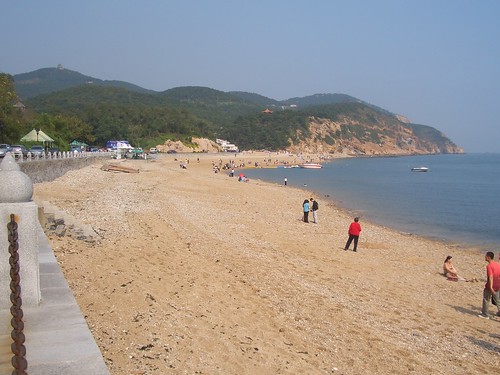
Kim Young-kwang, 79, has been trying to find the remains of Ahn Jung-geun, who in 1909 killed Ito Hirobumi, the Japanese resident-general in Korea, then occupied by Japan. (John M. Glionna, Los Angeles Times / March 7, 2010)
March 8, 2010
By John M. Glionna and Yuriko Nagano
Kim Young-kwang has spent years trying to locate the remains of the Korean nationalist who assassinated a Japanese statesman 100 years ago.
Reporting from Tokyo and Seoul - As a former South Korean intelligence agent, Kim Young-kwang knows all about subterfuge, secret documents and international intrigue.
But that's just soulless spy craft compared with what he considers the most engaging case of his life. It's a 100-year-old riddle that involves heroes from two nations, a Chinese prison, a Buddhist monk, a dose of Seoul politics--and a voice from the grave.
For more than two decades, Kim has traveled across the region to sift through yellowing archives, interview witnesses and amass a vault of evidence, all in hopes of answering a nagging question:
Where are the remains of Ahn Jung-geun?
On Oct. 26, 1909, the 30-year-old Korean nationalist walked into a crowded train depot in Harbin, China, and fired six shots at Japanese statesman Ito Hirobumi. Three of the bullets hit their mark; Ahn had killed the man he blamed for Imperial Japan's move to annex his homeland. Five months later, an unrepentant Ahn was hanged in a prison in Japanese-occupied northeastern China.
Before going to the gallows, Ahn asked that his body be returned to his native Korea, a request denied by his captors, according to Japanese diplomatic documents.
From there, the record fades. Papers kept by Ahn's captors are unclear about where his body was buried.
The uncertainty has kept alive visceral feelings among both Japanese and Koreans--about the assassination and Japan's 20th century record of imperialism. The emotions can't be put to rest, many feel, until Ahn receives a proper burial.
"This mystery is complicated because Ahn is such a polarizing historical figure," said Kim, now 79. "He is revered in Korea, but demonized in Japan."
As an agent in South Korea's Central Intelligence Agency, Kim never lost his appetite to solve his nation's biggest cold case, spending hours in libraries researching Ahn's troubled life.
Then, in 1987, as he began the last of three terms as a national lawmaker, Kim decided he wanted to see the prison where Ahn died. There was one problem: South Korea didn't have diplomatic relations with China at the time, so he couldn't get a visa.
But there was no stopping this old spy.
The man Ahn killed is considered the father of modern-day Japan. Ito established Japan's Cabinet system in 1885 and became the country's first prime minister, a post he held four times. In the early years of the 20th century, he served as his country's first resident-general in Korea, which was then a Japanese protectorate. For years, Ito's image graced the nation's 1,000-yen note.
Ahn, who was born in what is now North Korea, has mythic status of his own. Viewed as a martyr for Korean independence, he has been the subject of a film, play, musical and opera. He once cut off part of a finger in a pledge to avenge Japanese atrocities in Korea.
Kim's interest in Ahn dates to his youth. As a teenager, he played the lead role in a high school play about Ahn. Later, Kim began reading widely on the man he considers a political visionary. He became intrigued by the mystery surrounding Ahn's remains.
In 1987, tired of speculation, Kim decided to see whether he could find the grave himself.
Bribing a Chinese Foreign Ministry official in Hong Kong, he sneaked into China and managed to reach Lushun prison, near the northeastern city of Dalian, before being arrested and deported. "The only thing I accomplished was getting reprimanded by the Chinese," he said.
He would make nearly a dozen other forays across the border, visiting the prison and archives in nearby cities.
In 1989, he tried a different tack. He visited Ito's great-grandson in Japan and proposed that he meet and shake hands with Ahn's grandson. Kim hoped the publicity would draw attention to his cause and shake loose information about the location of Ahn's remains.
Ito agreed to the meeting, but Ahn's grandson, who lives in the San Francisco Bay Area, refused, Kim said. The grandson did not respond to requests for an interview.
View Los Angeles Times Article









